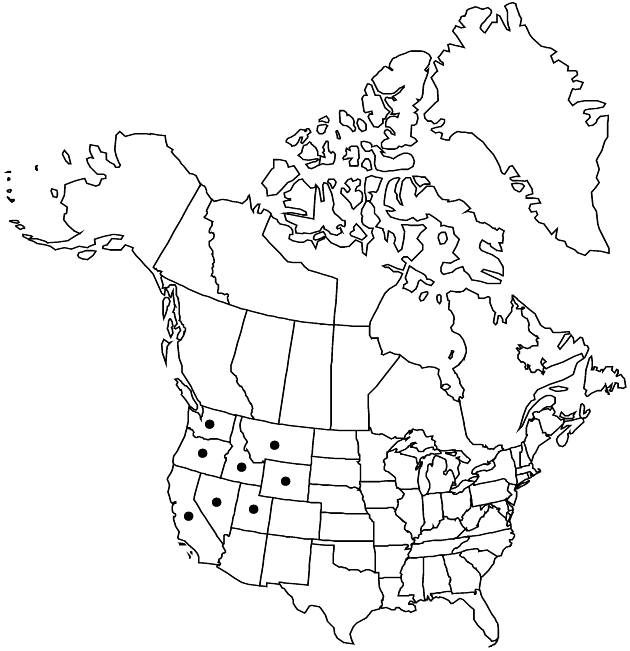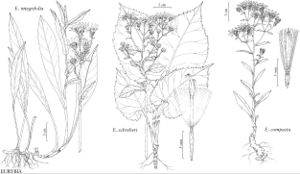Difference between revisions of "Eurybia integrifolia"
Phytologia 77: 260. 1995.
FNA>Volume Importer |
imported>Volume Importer |
||
| (6 intermediate revisions by 2 users not shown) | |||
| Line 8: | Line 8: | ||
}} | }} | ||
|common_names=Thickstem aster | |common_names=Thickstem aster | ||
| − | |basionyms={{Treatment/ID/ | + | |special_status={{Treatment/ID/Special_status |
| + | |code=F | ||
| + | |label=Illustrated | ||
| + | }}{{Treatment/ID/Special_status | ||
| + | |code=E | ||
| + | |label=Endemic | ||
| + | }} | ||
| + | |basionyms={{Treatment/ID/Basionym | ||
|name=Aster integrifolius | |name=Aster integrifolius | ||
|authority=Nuttall | |authority=Nuttall | ||
| + | |rank=species | ||
| + | |publication_title=Trans. Amer. Philos. Soc., n. s. | ||
| + | |publication_place=7: 291. 1840 | ||
}} | }} | ||
|synonyms={{Treatment/ID/Synonym | |synonyms={{Treatment/ID/Synonym | ||
|name=Aster amplexifolius | |name=Aster amplexifolius | ||
|authority=Rydberg | |authority=Rydberg | ||
| + | |rank=species | ||
}} | }} | ||
|hierarchy=Asteraceae;Asteraceae tribe Astereae;Eurybia;Eurybia integrifolia | |hierarchy=Asteraceae;Asteraceae tribe Astereae;Eurybia;Eurybia integrifolia | ||
| Line 30: | Line 41: | ||
|elevation=1600–3200 m | |elevation=1600–3200 m | ||
|distribution=Calif.;Idaho;Mont.;Nev.;Oreg.;Utah;Wash.;Wyo. | |distribution=Calif.;Idaho;Mont.;Nev.;Oreg.;Utah;Wash.;Wyo. | ||
| − | |discussion=<p>Eurybia integrifolia is found in mountain ranges bordering the Basin and Range Province, from the Sierra Nevada and Cascade ranges in the west to the Rocky Mountains and Colorado Plateau in the east.</p> | + | |discussion=<p><i>Eurybia integrifolia</i> is found in mountain ranges bordering the Basin and Range Province, from the Sierra <i>Nevada</i> and Cascade ranges in the west to the Rocky Mountains and Colorado Plateau in the east.</p> |
|tables= | |tables= | ||
|references= | |references= | ||
| Line 39: | Line 50: | ||
-->{{#Taxon: | -->{{#Taxon: | ||
name=Eurybia integrifolia | name=Eurybia integrifolia | ||
| − | |||
|authority=(Nuttall) G. L. Nesom | |authority=(Nuttall) G. L. Nesom | ||
|rank=species | |rank=species | ||
| Line 53: | Line 63: | ||
|publication title=Phytologia | |publication title=Phytologia | ||
|publication year=1995 | |publication year=1995 | ||
| − | |special status= | + | |special status=Illustrated;Endemic |
| − | |source xml=https:// | + | |source xml=https://bitbucket.org/aafc-mbb/fna-data-curation/src/2e0870ddd59836b60bcf96646a41e87ea5a5943a/coarse_grained_fna_xml/V19-20-21/V20_848.xml |
|tribe=Asteraceae tribe Astereae | |tribe=Asteraceae tribe Astereae | ||
|genus=Eurybia | |genus=Eurybia | ||
Latest revision as of 20:06, 5 November 2020
Plants 15–70 cm, usually in clumps, sometimes in large clones, densely long-stipitate-glandular distally; woody, branched, thick, usually short rhizomes or short caudices. Stems 1–3+, straight, stout, glabrous or sparsely hispid proximally, distally ± hispido-villous. Leaves basal and cauline, firm, margins entire, strigoso-ciliate, distal also stipitate-glandular, apices mucronate, faces glabrous or glabrescent to ± densely hispid or strigose (then ± scabrous), particularly on veins, midveins sometimes notably hispido-villous, proximally ± sparsely, distally ± densely stipitate-glandular; basal and proximal cauline long-petiolate (to 100+ mm), petioles ± broadly winged, bases sheathing or auriculate-clasping, blades ovate-lanceolate to narrowly elliptic or oblanceolate, 33–180+ × 11–50 mm, bases attenuate, apices acute or obtuse to rounded; mid sessile, blades oblong or oblanceolate to oblong-lanceolate, lanceolate, or lance-ovate, 30–140 × 7–27 mm, gradually reduced distally, bases auriculate-clasping, apices usually acute, rarely obtuse; distal (arrays) narrowly ovate to lanceolate, 9–50 × 3–20 mm. Heads 3–41+ in elongate, racemo-corymbiform arrays, branches ascending. Peduncles ± densely long-stipitate-glandular; bracts 0(–2), densely stipitate-glandular. Involucres campanulate, 8–14 mm, much shorter than pappi. Phyllaries 25–40 in 3–4 series, inner often purplish, oblong-lanceolate (outer) to linear-lanceolate (inner), ± unequal, membranous, bases pale, indurate, sometimes rounded (outer), distally foliaceous (3/4+ in outer, seldom to base, to 1/5 in inner) and wider than bases, margins narrowly scarious (non-foliaceous parts), purplish (at least inner), ciliate and/or stipitate-glandular (along foliaceous parts), apices squarrose, usually acute, sometimes acuminate, faces densely stipitate-glandular. Ray florets 8–27; corollas violet-purple, 10–15 × 1.2–2.2 mm. Disc florets 20–50; corollas pale yellow turning pinkish or purplish, 6–7.8 mm, slightly ampliate, tubes much shorter than cylindric to narrowly funnelform throats, lobes erect, lanceolate, 0.6–0.8 mm. Cypselae greenish stramineous, fusiform-obconic, slightly compressed, 4.2–4.7 mm, ribs 7–10, faces ± densely hirtellous; pappi of stramineous to tawny bristles 7–8 mm, ± equaling disc corollas. 2n = 18.
Phenology: Flowering summer–early fall.
Habitat: Drier meadows, open, moist woodlands, in sedge-willow, sagebrush, Douglas fir, and spruce communities
Elevation: 1600–3200 m
Distribution

Calif., Idaho, Mont., Nev., Oreg., Utah, Wash., Wyo.
Discussion
Eurybia integrifolia is found in mountain ranges bordering the Basin and Range Province, from the Sierra Nevada and Cascade ranges in the west to the Rocky Mountains and Colorado Plateau in the east.
Selected References
None.
